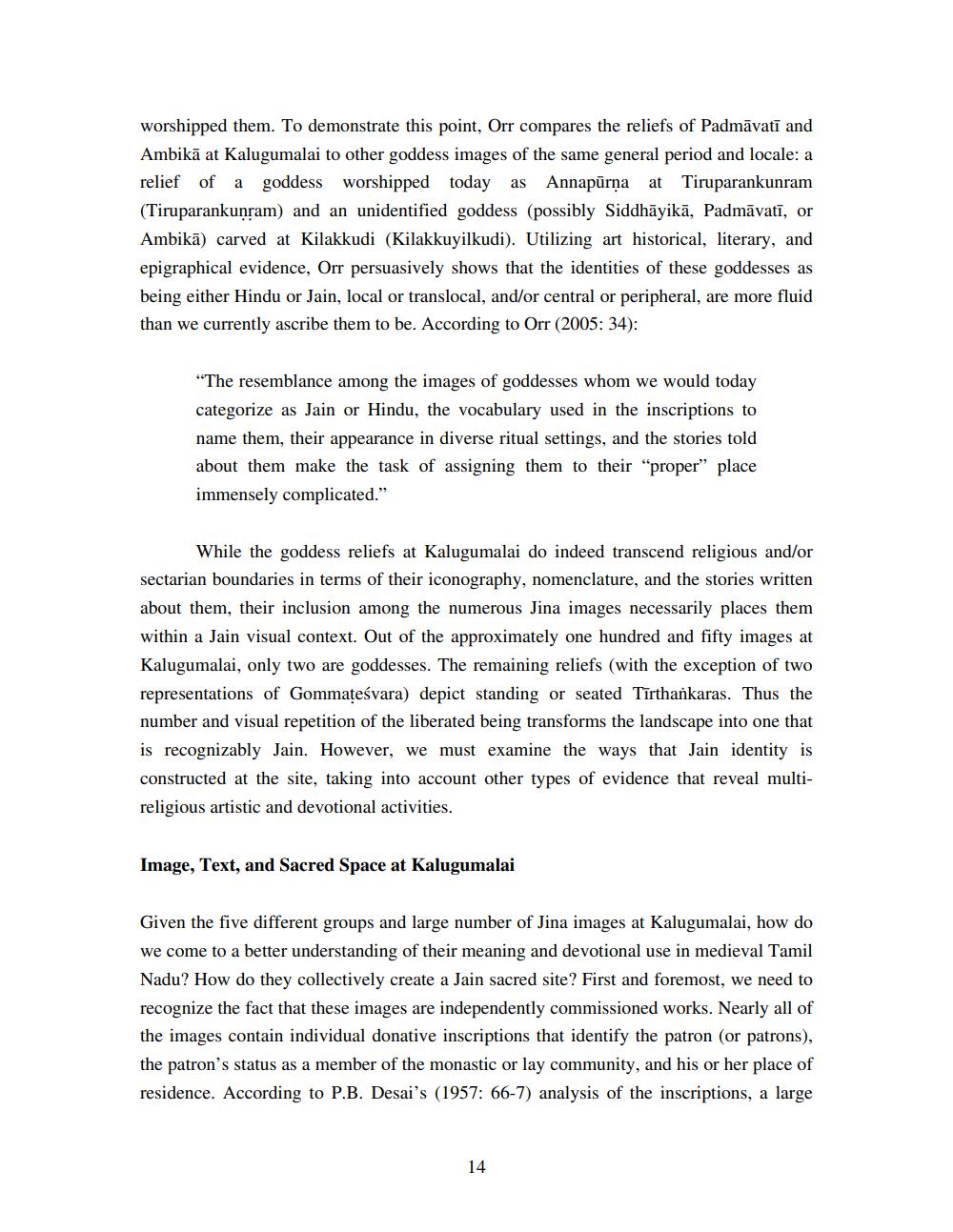________________
worshipped them. To demonstrate this point, Orr compares the reliefs of Padmavati and Ambikā at Kalugumalai to other goddess images of the same general period and locale: a relief of a goddess worshipped today as Annapurna at Tiruparankunram (Tiruparankunram) and an unidentified goddess (possibly Siddhāyikā, Padmāvatī, or Ambikā) carved at Kilakkudi (Kilakkuyilkudi). Utilizing art historical, literary, and epigraphical evidence, Orr persuasively shows that the identities of these goddesses as being either Hindu or Jain, local or translocal, and/or central or peripheral, are more fluid than we currently ascribe them to be. According to Orr (2005: 34):
“The resemblance among the images of goddesses whom we would today categorize as Jain or Hindu, the vocabulary used in the inscriptions to name them, their appearance in diverse ritual settings, and the stories told about them make the task of assigning them to their “proper" place immensely complicated."
While the goddess reliefs at Kalugumalai do indeed transcend religious and/or sectarian boundaries in terms of their iconography, nomenclature, and the stories written about them, their inclusion among the numerous Jina images necessarily places them within a Jain visual context. Out of the approximately one hundred and fifty images at Kalugumalai, only two are goddesses. The remaining reliefs (with the exception of two representations of Gommateśvara) depict standing or seated Tirthankaras. Thus the number and visual repetition of the liberated being transforms the landscape into one that is recognizably Jain. However, we must examine the ways that Jain identity is constructed at the site, taking into account other types of evidence that reveal multireligious artistic and devotional activities.
Image, Text, and Sacred Space at Kalugumalai
Given the five different groups and large number of Jina images at Kalugumalai, how do we come to a better understanding of their meaning and devotional use in medieval Tamil Nadu? How do they collectively create a Jain sacred site? First and foremost, we need to recognize the fact that these images are independently commissioned works. Nearly all of the images contain individual donative inscriptions that identify the patron (or patrons), the patron's status as a member of the monastic or lay community, and his or her place of residence. According to P.B. Desai's (1957: 66-7) analysis of the inscriptions, a large
14




